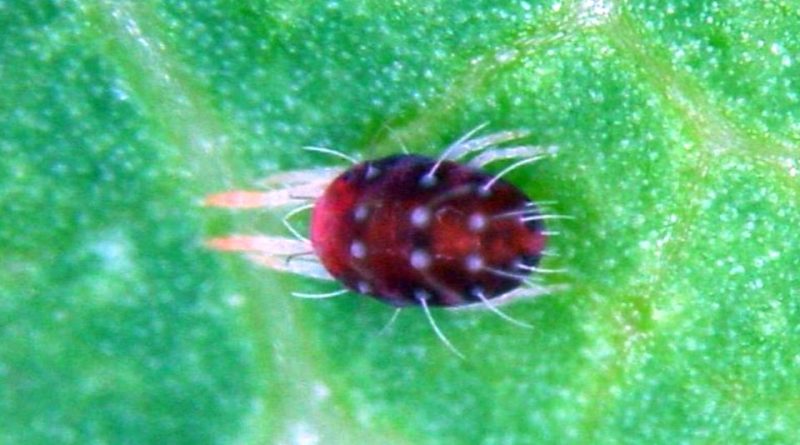Panonychus ulmi
Panonychus ulmi
The red spider mite of the fruit bearing and vine (Panonychus ulmi Koch, 1836) is a moth, the polyphosphate mite of the Tetranychidae family.
Systematics –
From the systematic point of view it belongs to the Domain Eukaryota, Kingdom Animalia, Sub-Eumetazoa Suborder, Phylum Arthropoda, Class Arachnida, Order Mites, Family Tetranychidae and then to the Genus Panonychus and to the Specie P. ulmi.
Geographic Distribution and Habitat –
The Panonychus ulmi is a mite that creates significant problems on fruit and vine. In Europe it is found up to Finland and has been observed, with different intensity, in France, Holland, Germany, Austria, Switzerland, Poland, Slovakia, Czechia, Hungary and Transcaucasus area and in Italy.
Morphology –
The females of Panonychus ulmi are small (0.5 mm long), of a brick red color with whitish tubercles on the back that correspond to the insertion point of the dorsal bristles. Tubercles are important organs for identifying these spiders from others similar to them, such as the Tetranychus urticae.
Males are smaller than females and lighter in color; the young spiders appear, instead, of orange-yellow color.
The winter eggs are characterized by a bright red color, while those of the spring-summer period are of a yellow-orange color like the nymphs.
Attitude and biological cycle –
The red spider of the vine and of the fruit trees is a polyphagous species; in fact, besides the vine it attacks also the apple tree, the peach tree and several other deciduous trees where it lives on the lower and upper pages of the leaves and on the shoots. This small mite winters as an egg on wood of different ages and, depending on the climatic conditions, it takes between 6 and 8 generations a year.
Ecological role –
The damage caused by the Panonychus ulmi is due to the bites; the symptom is very characteristic on the buds but above all on the leaves, which lose the brightness of the upper page, are discolored and take on a bronze color; then they come off the plant and dry up.
In addition, many mobile forms and their metabolic residues (excrements and exuviae) are visible, in the form of “white-greyish” powder, especially on the lower page. Moreover, it is possible to notice on the two foliar flaps of the small and loose sericeous textures that confirm the colonization by the mite.
The proliferation of this small mite coincided with the increase in the use of pesticides and insecticides that most likely unbalanced, in its favor, the biocenosis of some of its antagonists. Furthermore, even the irrational use of some agronomic techniques, such as the indiscriminate use of nitrogen fertilizers, are playing a negative role. In fact the main natural antagonists of these mites are mites belonging to the phytoseid family.
Phytoses can be eradicated from pesticide treatments and recolonize with difficulty the vine not having wings. In the absence of phytoses, numerous predatory insects are active, such as coccinellidae beetles and staphylinids, anthocorid heteroptera, crysopid neurotopters and tisanotteri. They are called “territorial” predators because, after having developed on other prey and crops, they can colonize the vine when there is availability of prey.
To rebalance the ecological relationships between this mite and its predators it is therefore necessary to limit or avoid the use of toxic pesticides and increase the pollen sources through a careful management of plant biodiversity. The phytoseiid mites, when they have been eradicated, can be reintroduced before the vegetative restart through the pruning wood, where there are the wintering forms, taken in vineyards where this predator is abundant.
Guido Bissanti
Sources
– Wikipedia, the free encyclopedia.
– Laffi f., 1983. Agricultural mites. Publishing Librarian University Cooperative. Bologna.

